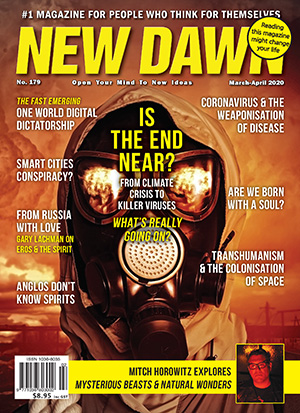Mysterious Beasts & Natural Wonders:
Toward a New Understanding of Bigfoot,
Flying Saucers, Fairies & other Inconvenient Realities
Several years ago a critic wrote about me, “Horowitz is an okay historian, but the guy believes in leprechauns for chrissakes.”That is true – I plead guilty. In this paper, I will try to explain why my critic is right.
Although I am not a crypto-zoologist, I am a great admirer of the paranormal investigator Charles Fort (1874–1932). People wouldn’t necessarily call me a Fortean, though. I don’t study anomalies. But my critic was referencing a series of events that I once related, which happened to me about 20 years ago in the nation of Belize in Central America.
For those of you who don’t know Belize, it’s a very beautiful, English-speaking country that borders Guatemala and Mexico on the Caribbean. Belize is filled with lush forestry, rainforests, snaking rivers and hills – including vast hills in the highlands, which are the subject of folklore and mysteries.
I was staying in the hill country at an eco-jungle lodge founded by a very enterprising couple and their kids from Maryland. They carved the whole place themselves out of the jungle interior. The area attracted a fair amount of ecotourism. Staying at a lodge next door was the actress and model Brooke Shields (who was very nice).
Now, a cabdriver was taking us to this jungle lodge from the airport in Belize City. It was a long drive of about two-and-a-half hours. The final leg ascended a very rocky, unpaved road up a mountain. It was difficult to navigate in a standard car because the rocks and roots and undulating landscape caused the car to hit bottom from time to time, and the terrain can damage the chassis.
As we drove up the hill, the driver started saying, “I really don’t like going up into these hills. As soon as I drop you off, I am going to turn around and speed off and get out of here.” It seemed odd to speed away on such treacherous landscape. “What’s the rush?” I asked.
“Well,” he said, “there are little men who live in these hills. They’re called aluxes. They’ve lived here for centuries. If you see one of them while you’re walking around in the forest you’ll get so frightened that you won’t be able to speak. Your voice will get caught in your throat. I really don’t like coming up here.”
Sure enough, he dropped us off, turned around, and sped away. I thought, “Well, that’s kind of strange.”
We checked into the lodge and the next day went canoeing down a river that ran below the ridge on which it was perched. I started telling one of my travelling companions that I was really kind of pissed off at this cab driver because I thought he was just playing “scare the tourist.” I thought he was trying to have a little fun at our expense.
As I was talking about this, drifting along this deadly quiet river, a big boulder came crashing down in front of us, having been rolled down a hill or falling down a hill from somewhere along the ravine we were canoeing through.
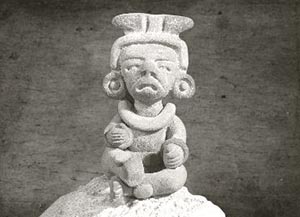
I got nervous and I thought, “All right, I need to watch what I say.” Because there’s a folk tradition that if you talk about these creatures they come around. This is why some people in Ireland today won’t make reference to “little folk” or leprechauns – they use euphemisms like “the other crowd.” This opens an interesting point: you find traditions of these little creatures all throughout the world. This folklore exists in Central America, in Ireland, in Polynesia, in West Africa. Virtually every continent has these legends, going back centuries, which include the detail that if you start talking about these little beings, sometimes called wood sprites or fairies or brownies, you invite them into your life, and they can cause mischief.
Many traditional-minded people in Ireland today believe so strongly in the existence of “the other crowd” that in 1999 a major highway under construction in County Clare got rerouted to avoid running past what was known as a fairy bush – the domain, so it is said, of these little beings. The fear was that if you run a highway through a fairy bush you will incur their wrath, and they will cause accidents. A folklorist and historian named Eddie Lenihan, with whom I’ve worked and greatly respect, helped prompt the change.
Who Goes There?
Perhaps I’m sympathetic to these events because I do not want to live in a world where no mysteries remain. I do not want to live in a world where you hear a twig snapping in the woods and don’t wonder, “Who goes there?” I don’t want to live in a digital, fluorescent-lit environment in which we feel that we know everything that’s out there.
Call it sentiment, but I think that most of us feel intuitively, and sometimes through personal experience or study, that the belief nothing at all is lurking in the dark corners doesn’t cover all the bases of life.
There exists so much testimony and so many stories of people having unusual experiences with things that are not supposed to be there, whether they’re little men or Bigfoot or something that’s lurking in the water. We’re all attached to these stories to some degree. Obviously, the concept of Bigfoot or some kind of mysterious simian runs not only through a great deal of our folklore but wields a great hold on people’s attention today.
The question is, why? We face so many crises and problems in the world: war, climate change, famine, and all of the wonderful things coming out of the White House. Why would we be interested today in the persistence of mysterious winged beasts or Bigfoot or yeti or fairies? For what reason?
I think part of the reason is not only that some of these things may be empirically real – when considering the paranormal I do not remove empiricism from the table prima facie, a point to which I’ll return – but I think our fascination with mysterious beasts and natural wonders speaks to how we feel, and have reason to feel, that there exists an unseen dimension of life. Something beyond our workaday, five-sensory existence.
What I am describing goes beyond a wish to believe in the mythical. Rather, it touches upon our understanding of a world that doesn’t fully disclose itself, but that we experience intuitively, insightfully, and even cognitively in terms of phenomena that may be causatively related to our minds, as well as to unseen dimensions, the reality of which we’re unable to fully decipher but which we catch glimpses of from time to time.
The UFO Thesis
This is true also of so-called UFO or extraterrestrial sightings. I think that we are actually living through a moment, in the here and now, where we are experiencing a cultural breakthrough in understanding about the existence of unknown forces and expressions of life.
This can be seen in particular with regard to the UFO thesis. In September 2019, the Guggenheim Museum in New York City hosted a remarkable, and I would say unprecedented, panel on UFOs and extraterrestrials. This was notable in itself because the Guggenheim is not considered a fount of occult passions. This is the first time I can recall any major cultural institution in the city hosting a panel like this and earnestly exploring this question.
The panel was the work of a very innovative curator, Troy Therrien, who oversees the Guggenheim’s architectural collection. It featured writer and scholar Gordon White, a wonderful occult intellect, and philosopher and historian Diana Pasulka. It was a fascinating program before a packed house. Afterwards, the curator asked me: “At what point do you think it is going to become intellectually embarrassing within our culture not to take seriously the question of UFOs?” I told him that I do not refer casually to paradigm shifts. I often deflect questions from mainstream journalists about supposed occult revivals because I think such framings are usually a way of trying to find a news hook. I don’t speak casually about those kinds of cultural shifts. With that in mind, I replied, “I actually think, in all honesty, that we have just now, at this very time, entered the point culturally where it is no longer sustainable or even intellectually serious to wave off the notion of UFOs.”
This shift arose in part from an event in 2017. The Pentagon and the Navy released cockpit footage and recordings of pilots witnessing UFOs, including vehicles moving at unbelievable speeds, behaving in ways that airborne vehicles are not supposed to behave, and the pilots asking: “What is that?” This material was so plain, clear, and persuasive that it moved even holdouts in the gatekeeping culture to acknowledge its significance.

The footage appeared in a prominent and widely read piece in The New York Times, co-written by the excellent researcher Leslie Kean. I consider it one of the most significant news stories because it finally moved the dial on the debate. The question of what UFOs are remains unsettled, of course; but that the testimony and records of such phenomena raise profoundly valid questions is now denied by no serious person.
I date the before-and-after of this shift to a pair of columns that appeared in the same newspaper by the opinion writer Ross Douthat. This writer considers himself a no-nonsense, old-school conservative, of which we have few remaining in the US. In December 2017, Douthat wrote a column headlined “Flying Saucers and Other Fairy Tales.” As you can gather, the column denigrated interest in UFOs as a persistent and silly trope. Oddly enough, as a device for dismissing the delusions of UFO acolytes, Douthat used the work of my friend Jacques Vallée. Jacques is known not only for co-designing the prototype of the Internet, but he is also one of the most trenchantly intelligent UFO researchers of our time, as well as a brilliant social observer and writer. His diaries Forbidden Science revive a style of serial-memoir writing that hasn’t been seen since the early-to-mid twentieth century.
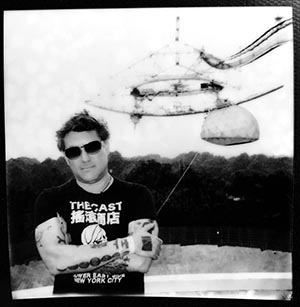
The columnist cited Jacques as saying that there was mechanical unlikelihood of vehicles from outer space being able to reach our terrestrial confines. But what Douthat omitted in Jacques’ work, and what is most distinguishing in his theorising about UFOs, is that he long ago posited there are so many apparent mechanical impossibilities involving UFOs that, following the principle of Occam’s Razor, it’s plainer and broader to theorise that some of these sightings may be extra-dimensional. I’ll say more about that and define what is meant by extra-dimensional. Oddly, the columnist entirely omitted that key facet of Jacques’s outlook.
Flash forward to August 2019, a month before the Guggenheim panel. The same columnist reversed course and wrote a piece, while not related specifically to UFOs, in which he noted the persuasive (if unsettled) nature of some of the UFO data that had recently been released, without noting that less than two years earlier he dismissed the validity of considering such data. I tweeted my thanks that he had seen fit to change his position. To my surprise, the New York Times opinion section retweeted me – another institution not known for its occult passions. I began to realise, typified by this little turn of events, that we have reached a turning point where it was intellectually unserious to dismiss the UFO question. I would challenge any materialist scientist or philosopher to push back against that statement.
Random Numbers & Patterns
Until 2007, there was a parapsychology lab at Princeton University. It was known by the acronym PEAR for Princeton Engineering Anomalies Research Lab. This was a serious parapsychology lab in existence for about 30 years. When PEAR was operating it conducted a number of experiments with machines known as random number generators. We use random number generators every day – they produce an infinitely variable pattern of numbers and we commonly use these things to set passwords.
Parapsychologists sometimes use random number generators to test for ESP or telekinesis. They might place a subject in proximity to a random number generator to see if he or she proves capable of disrupting the randomness, of creating a signal in the noise, so to speak. Perhaps I jump to a conclusion by using the term create – but, rather, there is congruity between the individual’s efforts to interrupt randomness and the appearance of a pattern that shouldn’t be there.
One of the things the Princeton lab did, going back many years, was to place random number generators at various locations around the world. It was found – and there have been journal articles about this and I’m simplifying it somewhat – that during the events of 9/11, immediately preceding the events, during them, and immediately following, the random number generators started displaying patterns.
There was an interruption in these completely randomised and chaotic displays of numbers. Suddenly numbers would repeat. There was a traceable pattern at certain moments. Researchers were left with an enormous question, which begs further research and further understanding: Why, at a moment of what could be loosely described as a global trauma, did this network of random number generators demonstrate a pattern, an interruption in the noise?
This raises the tantalising prospect of mental causation. Of whether we, through the agency of thought, are able to impact and produce outcomes. This isn’t a paper on mental causation, but there are many different scientific fields, including neuroplasticity, quantum mechanics, placebo studies, and psychical research, that have demonstrated causation relating to thought. One way of empirically discussing the manifestation of energies is to note that during that period of global trauma we saw some apparently unified impact of thought, which was exercising probable telekinetic influence on this network of random number generators.
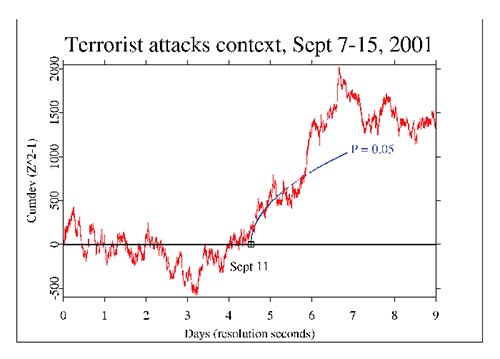
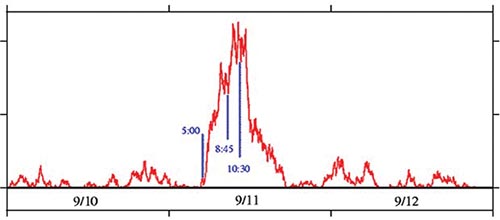
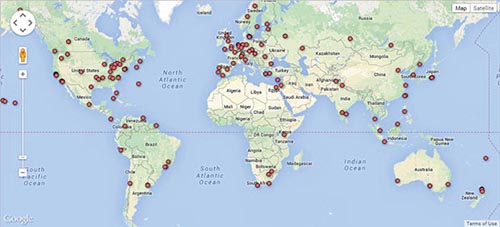
Check Your Foundation
I think we may be approaching a new way of understanding Bigfoot sightings, UFOs, persistent reports of anomalous beasts and things that go bump in the night and twigs snapping, so to speak.
People in many reaches of US society are obsessed with the existence of Bigfoot. It is the subject of these mostly awful cable TV pseudo-documentaries; it fuels an enormous stream of books, articles, debates, and controversies. Scientists complain that no one has been able to produce viable DNA evidence of Bigfoot. One might argue that point, but that’s the broadly held critique.
If one concedes the point, however, it could open to a more radical and supple thesis. Several scientists, including Richard Feynman, have observed that you can’t get out of a problem by employing the same thinking that got you into it. I’ve found that is a universal principle. I have found it a good principle in writing, for example. If you write a sentence or paragraph and you’re wrestling with it and clarity keeps eluding you, there’s probably something wrong with the foundation. It’s best to toss out the line or paragraph and start fresh. If something proves chronically difficult – this is true in relationships, too – there’s probably a flaw in the foundation itself.
The same may hold true for the question of mysterious beasts and natural wonders. Maybe the reason we don’t find more physical or DNA evidence is that, while these persistently reported phenomena are real and are actually occurring, they do not necessarily conform to our five-sensory material lives.
This returns us to the observation that Jacques Vallée made about UFOs probably being some kind of inter-dimensional manifestation, which enter our awareness intermittently and then vanish. There may exist an infinitude, or superposition, of events occurring all the time and everywhere, which we are capable of measuring or experiencing only intermittently (such as in the cases of documentary imagery), fractionally, or at periods of extreme sensitivity, in the same way that ESP or telekinesis may manifest at highly receptive moments. This ties into the question of psychical energies being unleashed during instances of trauma or crisis or intensity.
Super Events
Consider it this way: Within the particle lab, more than eighty years of quantum experiments demonstrate that subatomic particles occupy a state of superposition or a wave state. As such, they appear everywhere at once. They exist in a state of infinite possibility. We know this because subatomic particles display interference patterns, which demonstrate that they are non-localized. They exist in a state of potential until an observer takes a measurement. When an observer decides to take a measurement the particle collapses from a wave state to localized state. Without that measurement, the particle will not occupy a definite, locatable place.
This is not controversial. No quantum physicist would challenge eighty years of this data. What is controversial are the implications of the data, and the willingness of our culture to follow those implications. In the 1930s, physicist Erwin Schrödinger devised a thought experiment known as Schrödinger’s Cat. He intended to force his colleagues to acknowledge the impossible possibilities that occurred in the particle lab. Schrodinger challenged them to acknowledge the evident absurdity of what was being documented – of this surreal reality in which everything exists everywhere at once, in a state of infinitude.
One variant of Schrödinger’s Cat experiment could be put this way: You take a house cat and place around its neck a collar with what Schrödinger called a “diabolical device.” Upon contact with a single atom this device releases a fatal poison. You take the collared cat and place it in one of a pair of boxes. You then direct a single atom at the two boxes. After you check the boxes to see the outcome. What would you find?
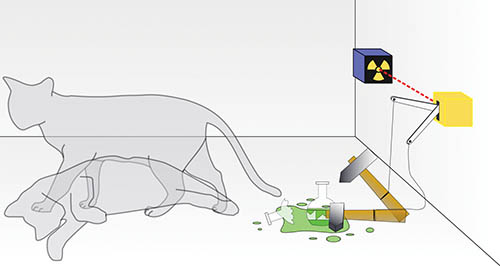
All commonly observed reality dictates if the atom went into the empty box, the cat would be alive. If the atom went into the box that held the cat and tripped the poison device, the cat would be dead. Simple, right? But Schrödinger said, no, that’s not reality at all. You would have to allow for the existence of a dead/alive cat. Because at one time, when that atom was in a wave state, it appeared in both boxes at once. It became localized in a single box only when you went to check.
Hence, reality demands that you would have a dead/alive cat. It’s impossible, it makes no sense, and yet it’s absolutely required if we’re to accept the data from quantum physics.
In the 1950s, physicist Hugh Everett extrapolated further from the Schrödinger’s Cat experiment. Everett contended that the timing of your decision to look or not look in the boxes would create a past, present and future for that cat. If you were to wait eight hours, say, until you checked the boxes, you would not only have a dead/alive cat, but the alive cat, having been stuck in the box for eight hours, would be hungry. You actually created a past narrative and present for that animal. Your decision to look, not look, to wait, to not check it all, creates an arc of life for this animal.
That could be the actual nature of reality: all outcomes exist in infinite potential and become localized or actualised only when they reach our perspective. This may be a matter of measurement, focus, or awareness, accident or choice.
Leaving aside the question of freewill (another issue entirely), what I’ve described raises the possibility that these persistent, extraordinary events – sightings of everything from serpents in the water, to mysterious winged beasts, to otherworldly beings, to gnomes, to Bigfoot – may be the result of perspective and of these things intermittently localizing in our reality.
A related possibility comes from what is called string theory. String theorists try to explain the strange behaviour of subatomic objects, as well as why such objects affect one another at distances, and why, as Isaac Newton observed, even macro objects at vast removes mirror each other’s motions. String theory holds that all particles and all matter are not separate entities but rather are part of vast, undulating networks of strings. When an object at one point in space affects another object, we’re not seeing two distinct entities but a unified string of objects. What’s more, different dimensions and universes exist along these strings, so we may not always see the thing causing an effect. In string theory, all material and events are one whole. We catch only hints of this through exquisitely fine measurement.
When speaking of measurement, we naturally think of laboratory instruments. But what are our senses if not instruments of measurement through which we navigate reality? On the psychological scale, it may be that at moments of profound sensitivity, or at moments in which we are emotionally primed in a certain way – maybe through trauma, through euphoria, through a sense of crisis – we catch glimpses of things that are real but do not usually register with the senses or mechanics through which we experience daily life. Anomalous entities exist, but they exist at other points on a vibrating, cosmic string, or what we might call another dimension. That’s one theory. Another, not necessarily at odds with string theory, is that these anomalies occupy a state of superposition which you select into your locality – not manifest but select, which is my preferred term – through perspective.
Hence, these strange events or entities may be real, but they are perceived only occasionally, and we give them names like Bigfoot or fairies or UFOs. These potentialities exist all around us, but we don’t possess the instrumentation to measure such things. Our way of viewing the world is coarse and limited – even illusory. For example, we organise our lives by linear time. Linear time feels very real. It’s overwhelmingly persuasive. But linearity itself is an illusion. It is a necessary illusion which we use to organise life, but it’s not real.
We know that time slows down at or near light speed. The aging process slows when a being is moving near light speed. We likewise know that time slows or bends in environments of extreme gravity, like black holes. These things are no longer theoretical, they’ve been measured, they’re real, they’re actual. Yet they make no sense to us. As we go through daily life and our commutes and so on, it makes no impact on us that time can actually slow.
Even knowing this, being able to understand this, being able to talk about this, doesn’t necessarily impact our everyday experience of linearity. Because linearity is probably a very necessary illusion for five sensory beings. But it’s a device, not ultimate reality. Ultimate reality is stranger than we’re given to believe.
Why Don’t We See Reality?
Why don’t we pick up more on this material? Why does life seem so orderly to us? There’s just one of me here, there’s just one of you there, there’s one chair that you’re sitting on. There’s not an infinitude of chairs. It feels so practical, so actual. It’s difficult to imagine that any of this quantum or string phenomena can be real in more than an abstract way or on the subatomic scale. Philosopher William James, in his Gifford lectures in 1902, made an observation that speaks to this. When a mystic sees something, James said, it’s as if he or she is viewing it through a microscope. The mystic sees more and more of what’s really going on because of his or her extreme sensitivity.
If I look at a drop of water, all I see is a common drop. It’s translucent, it feels like what I call wet. But if I look at that same drop through a microscope, all kinds of things are revealed. There are single-cell organisms, there are bacteria, there are molecules moving around. The molecules are made up of atoms and other particles that are similarly moving around. All kinds of things are occurring that I don’t normally see.
James made the contention that the mystic is always viewing things as if through a microscope. When you pan the camera back, so to speak, you experience less and less of what’s really happening. Without crediting James, quantum physicists today call this the phenomenon of “information leakage.” They respond to the apparent disparity between the particle world and our macro world by saying what James said, which is that when you’re measuring things with extremely fine and well-tuned instruments, you’re seeing more and more of what’s really going on. But when your capacity for measurement coarsens, you lose data and see less and less of what’s occurring.
Just as linear time is a device, just as particles exist in a wave state or state of superposition, it is possible that we live amidst an infinitude of extraordinary events, which we perceive in only fragments or at fleeting moments, maybe moments of great awareness, maybe moments in which our ordinary thought patterns, for whatever reason, get interrupted, maybe moments that are available to some of you because you have a gift for what we call ESP or sensitivity or intuition. It could be that at such times, the individual is capable of seeing what’s really happening, and yet such individuals get smeared with terms like psychosis, fraud, imagination, fantasy, or confirmation bias. Materialists over-rely on the term confirmation bias to ignore testimony. Consistent testimony from varying sources forms a record and should be considered. Materialists fail to realise that confirmation bias, or prejudicial thought, is their own problem, too.
If my contention is correct, which is to say you get what you’re looking for, we’re all in the same boat. So let’s sit down together in an interdisciplinary way and have a conversation and try to determine the topography. We must try to understand more of what’s going on. We won’t get there if we dismiss or underfund or ban the so-called borderline sciences. Think of the possibilities that open to us if scholarly research into psi or extra-cognition really becomes available. If places like the Princeton Engineering Anomalies Research lab didn’t have to close because it was time for the founders to retire and nobody else had the energy to maintain the kind of fundraising or fight the battles that they fought to keep that lab alive.
We have money for everything in this society. There’s no shortage of resources. And yet we always seem to cry poverty when it comes to dispensing resources in a more democratic way or allotting really modest sums to keep alive research into the nature of reality itself. The reason I appreciate today’s best paranormal investigators, and why I appreciate historical figures like Charles Fort, is because they poke holes in the straight story. They drive us to ask questions that might otherwise never get considered.
A Damnable Bore
Fort himself was a fascinating character. He was born in Albany, New York, in 1874 and lived and worked for much of his life in The Bronx. Like the occult scholar Manly P. Hall, Fort did a great deal of his research in the New York Public Library (where I now sit in a research room writing these words). Newspapers used to call Fort “the mad genius of the Bronx.” He produced his first of four books in the year 1919. It was called The Book of the Damned. By “damned” Fort meant the facts that didn’t fit in: outsider facts, theories, and ideas; facts that were considered unfit for consumption, so they were pushed to the margins.
Fort would gather news reports of things happening around the world that weren’t supposed to be happening, like mysterious airships in an age before we had the term flying saucers; frogs falling from the sky; mysterious beasts; spontaneous combustion; telekinesis – all sorts of things that didn’t fit the straight story.
Some people thought Fort was a genius, that he was modernity’s greatest critic of science, because he understood that science in the early 20th century had formed its own orthodoxy, its own canon, to the point of excluding things that didn’t fit in.
The novelist Theodore Dreiser was a great admirer of Fort. He said, “To me no one in the world has suggested the underlying depths and mysteries and possibilities as has Fort. To me he is simply stupendous.” Whereas H.G. Wells called Fort “one of the most damnable bores who ever cut scraps from out-of-the-way newspapers.” So, there was a binary attitude about Charles Fort. But I’ve always loved the man, and I think his work has retained a legion of fans and readers precisely because he was capable of poking holes in the straight story.
Beastly Traits
There’s another dimension to the presence of mysterious or allegorical beasts. Some of the beasts that appear in parable and mythology, like the sphinx or griffin or centaur, summon us to traits that are actual or potential parts of our personas, of our abilities as human beings, which we are divorced from, which get pushed off to the margins of our understanding, which we can speak of only in terms of metaphor because they’re not accepted, they’re not understood, they’re not integrated into the human story. As Charles Fort would say, they’re “damned.”
Obadiah Harris, the past president of Manly P. Hall’s Philosophical Research Society (PRS) in Los Angeles, shared a wonderful story with me a few years before his death in 2019. We held a very moving memorial service for Obadiah at PRS, which you can find online. Obadiah said that when Manly Hall used to ready himself in his office each Sunday morning prior to delivering his weekly talk, he would pause before his altar and rub a wonderful little Egyptian statuette of a cat. It was a black onyx model of Bastet, one of the Egyptian cat gods. He would rub this little cat for wisdom because a cat has the ability to see in the dark. Many people felt Manly displayed a preternatural ability of speaking extremely fluidly and at great length without notes. I’m not suggesting a connection but I did like the story. And this little cat really existed – I held it in my hands – but it has unfortunately disappeared from Manly’s office. We’d like to re-select this little cat into existence.
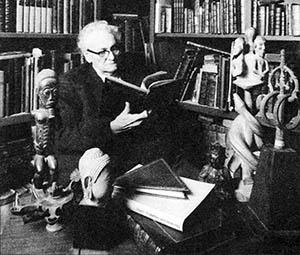
We often ascribe powers to animals that exist within ourselves, but that we don’t feel capable of summoning. We mythologise them. In that vein, I want to share the story of two episodes I experienced recently in Egypt in connection with mythical or allegorical animals.
In February 2019, I was travelling in Egypt with my friend Ronni Thomas. Ronni is a brilliant film director and we are making a documentary about the 1908 occult book The Kybalion. I once regarded The Kybalion as a kind of early-twentieth century novelty of occult literature. Several years ago, however, I came to realise that I was wrong. I was underestimating the nature and the greatness of that short book. It’s a beautiful and very relevant distillation of the spiritual psychology found in the Hermetic writings that appeared during the final stages of Egyptian antiquity.
For the film, we decided to go back to the source, as much as we were capable. Ronni made the courageous decision that we should do some filming in Egypt. Off we went to Egypt in the month of February. I can disclose this now that I’m safely back home, but we had no license to actually film because it’s enormously expensive. We had a decent budget, but it was out of reach. So we had to surreptitiously film in Egypt, which is no small risk because if you’re caught without the proper licenses, you will be arrested and thrown in jail, which is probably not a great experience. We were very aware of this, but felt that even though we lacked the proper licensure, and we simply couldn’t afford it within the confines of our budget, we just had to do this.
We were able to get some extraordinary footage. There are sneak peaks of the documentary on YouTube and Vimeo. We expect the final film to be released in 2020. You’ll be surprised at how much footage we were able to gather illegally, but very lovingly, in Mother Egypt. We were also granted some remarkable access and opportunities. I had two opportunities that I want to share, both involving exposure to allegorical beasts.

Subterranean chambers exist in the Valley of Kings that are off the path of most people who visit Egypt. These chambers are accessible if you’re basically willing to pay the right people. My wish is that it wouldn’t be commerce alone that allowed people to gain entry to these places, but sometimes you have to deal with the world as it is. We were willing, as much as we were able, to pay off the right people to enter some places that are normally off limits.
After paying, we were able to enter a chamber very, very deep in the Valley of Kings. Within this chamber is a large bas-relief of a bull. A bull in Ancient Egyptian symbolism represents strength, virility, and personal power. It’s an enormously potent image within the pantheon of Egyptian deities and allegories. The guide who took me into this chamber gestured to me that it was permissible to touch and lay hands on this enormous bas-relief. The carvings in the chamber were incredibly well preserved. One of the astounding things that we don’t always realise when we look at Egyptian monuments is that they were originally colourised. They were not only three dimensional, they were not only covered in beautiful precious stones and finishing material, but they were majestically and very vividly colourised. Over time, the most widely seen or weathered monuments have lost this colour.
This was within a very dry, temperate, cool underground chamber, and these images and bas-reliefs had been preserved going back thousands of years. I was a little uncomfortable when the guide invited me to lay hands on the bull because I have tremendous respect for antiquities, and I would never want to do anything to detract from the power and the beauty of these monuments. I’m very aware that if tourists and travellers are traipsing through the place all day and laying hands on the object, it gets damaged or degraded. And yet I felt that I was being given an invitation.
The philosopher Jacob Needleman once said to me, “What do you do when someone offers you a gift?” Brilliant student that I was, I just stared at him blankly. He said, “You accept it!” So I made the decision to accept this gift. I can only report in all candour what happened. As I laid hands on this bull, I experienced, call it what you will, a tremendous rush of lightning and electricity shooting through my body, and I felt this sense of inner light within me. The only phrasing I can use to describe it is just feeling this flash of lightning pass through me. It was an extraordinary and tactile experience.
Of course, one could say, “Look, you’re a suggestible guy, you’re an excitable person.” I don’t know, nor would the person saying that know, just what occurred. But I can only report that it was, for me, a palpable experience. Here I stood before this magnificent allegorical beast carved in a bas-relief going back more than 3,000 years, still fully colourised and vivid, and the symbol of virility and strength and power, and I was invited to lay my hands on it. I felt lightning absolutely pass through me. It was one of the most remarkable experiences of my life.
We had another experience when we were at the Temple of Karnak in Luxor. Our guide was aware that Ronni and I had occult interests. There’s a colloquialism in Egypt for people like us – they call us “meditators.” Terms like occult and New Age don’t translate very well. Once they say, “Oh, you’re meditators,” then they know what you want to see. Our guide for this leg of the trip was an extraordinary woman who was multilingual even though she had never travelled outside the country. She learned English, French, and Korean on her own through BBC language courses. She brought us to a small temple to the cat goddess Sekhmet, which is tucked away on a side path in this vast complex. This small temple is closed and padlocked. A soldier toting an automatic rifle and a robed guide guard it. The only way to gain entry is by paying a bribe. Again, you sometimes have to deal with the world as you find it. And, of course, people are entitled to earn a living.
The soldier and guide looked at us like, “Who are these two mangy characters?” We very nicely said hello and greeted them with as much money as possible, and then everybody was all smiles. We were invited to enter this chamber to Sekhmet, a goddess with the head of a cat and the body of a woman. I can’t begin to tell you how completely dark it was inside this chamber. The chamber is thousands of years old and there wasn’t so much as a streak of light, with no cracks or fissures in the wall.
We were guided to kneel at the feet of Sekhmet and invited to kiss her feet and lay our hands upon her body and recite a prayer. We performed this short ceremony in pitch blackness. This, too, was an experience of absolute transcendence. There seemed to be a complete dissolution between us as separate beings and the goddess before whom we kneeled. I think we both experienced a sense of dissolving, almost like a lightness of body that felt something like what an out-of-body experience might be like. We felt a complete disassociation crouched in the darkness before this goddess. We felt, you could say, almost a sense of transcendent oneness with that before us, and everything briefly entered a state of non-physicality. It was remarkable.
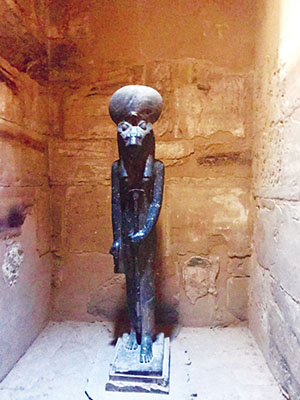
I’m not someone who goes around collecting experiences, but this left us two travellers, two seekers going places off the permissible path, with perhaps some feeling for what our primeval ancestors might have felt in the presence of these extraordinary beings. The episode reaffirmed my belief, which I’ve explored elsewhere, that we have neglected some of the wisdom of our primeval ancestors who identified with and personified certain energies in deific form, and who gave these energies names, whether Set or Sekhmet or Bastet or Minerva or Zeus or Jupiter or Athena.
They identified these energies, maybe as projections of their own intellect or maybe non-localized intellect, and deified them. They also petitioned them. When people come to me in need, when they’re feeling at a dead end in life or things aren’t going the way they wish, my suggestion, as an ethical and spiritual experiment, is to identify a god or goddess from the ancient pantheon, whether from Egypt, Persia, the Hellenic world or elsewhere, one with whom you resonate, one that is meaningful to you, one whose characteristics or traits seem to capture something that you need in life, and having done so I see no reason why you cannot enter a prayerful state and make a petition to this deity and see what occurs. You may find exactly the help that you need. My contention is that the old gods may be lonely. They hunger for human attention and veneration.
People from all over the world used to travel great distances to honour and petition these gods. That is no longer so. It could be that these personified energies or intelligences hunger for human contact; and if you make the personal decision to attempt a relationship with one of these deities and to make a petition, you could be surprised.
I speak to you from deepest personal experience. I would never offer something as a suggestion that I haven’t tried and experimented with myself. I’ve had some of the deepest, most meaningful spiritual experiences of my life by following the path that I just described. You certainly don’t need to tell anybody what you’re doing; you don’t need to tell your shrink or your boyfriend or your spouse. It’s yours. It’s your private experiment. It’s something I’ve found bountifully fruitful and significant. We displace onto certain ideals of allegorical beasts and deities and beings, traits that perhaps exist within us and that we are capable of selecting or having a relationship with.
Reclaiming the Damned
I have written elsewhere of how the snake or the serpent represented wisdom in cultures all over the world. This was true in Egyptian culture, this was true in Hebraic culture, this was true in Mayan culture, this was true in Celtic culture. Every culture around the world, spanning enormous stretches of time, distance, language, and custom, identified the snake as a symbol of illumination, possibility, provocation, and awareness.
I think that we, in the Western world, have made a tremendous misreading of Genesis 3, where we have associated the snake who conversed with Eve as a figure of evil or maleficence. Rather it was the snake who gave Eve permission to eat from the so-called Tree of Knowledge of Good and Evil, which the creator had placed in the midst of the garden, so the parable goes, even though the garden dwellers, who were supposedly beloved and cared for, were prohibited from eating from it and gaining awareness, and were told they would die if they did so. The snake told Eve, “You’ve been deceived. You will surely not die if you eat the fruit from this tree.” She took the challenge and did not die from eating the fruit, which she shared with Adam. Their eyes were opened, and they gained the capacity for measurement and creativity; they gained the capacity to argue with the creator, and they were expunged from the garden of paradise. Their offspring, Cain and Abel, so the story goes, got caught up in this tragic act of fratricide. But it’s very possible that the price of creativity, the price of awareness, the price of perspective, is friction.
Haven’t we seen this play out across our culture? In Europe, for centuries, they committed witch burnings, which are still occurring in parts of the world today. People who are clearly capable of functioning in the world are called lunatics or flying-saucer nuts when they have extraordinary experiences. Plato famously theorised that if we were all captured in a cave, chained and capable of witnessing reality only as shadows cast on a wall and someone was somehow able to leave the cave and came back and tell the other captives about the splendour that existed in the outside world, what would they do? They would kill the individual.
Isn’t that the story of the snake in the garden, essentially playing out over and over again? Every time a capable, mature, intelligent person speaks of an extraordinary experience, he or she is told, “Don’t talk about seeing a UFO. You’re going to lose your rank and your reputation within the Air Force. Don’t try to experiment with ESP, everybody’s going to think you’re a nut and you’re going to lose your departmental funding. Don’t question the standard dating of the Great Sphinx or of the pyramids because if you start questioning the standard timeline people in your department are going to get hostile toward you, and you’ll be branded a nut.”
What do we do? We disassociate from these abilities and experiences and code them into parable, story, myth, and archetype, because it’s a way of distancing ourselves from abilities and possibilities that exist within the human experience, but that are easier for us to understand and talk about, that are less risky for us, if we classify them as mythology, as anomalies, as wonders, as little green men, as strange encounters. People who testify to these things in an actual way are treated, in effect, like Adam and Eve, expelled from the garden of paradise, or seen differently, expelled from the garden of conformity. Yet this state of affairs is getting shaken up at this very moment.
As I mentioned earlier, I do not speak casually about paradigm shifts. Every generation seems to think it exists on some kind of a precipice. Some generations did indeed exist on a precipice. The World War I generation existed on a precipice. I don’t think one should speak about this casually. But I do believe we are facing possibilities and questions in our generation, at this very moment, that may upend our idea of what it means to be human as much as the theories of Darwin upended people’s views and understanding of human nature in the Victorian age.
I think we’re poised on this precipice, where we look out at the world, we look out at testimony of wondrous beasts, strange beings, and anomalous events, and we’re coming to realise that we’re not necessarily looking at things that are fantasies or chimeras. We are actually looking into a mirror. And what we’re looking at is gazing back at us. These are the traits of our own personas that we’re becoming reacquainted with. Our personas are inter-dimensional, unmoored by linearity, and symbiotic with a larger cosmic reality than we have previously understood.
Mitch is lecturer-in-residence at the Philosophical Research Society in Los Angeles, where he originally delivered the lecture on which this article is based.
About the Author
![]()




